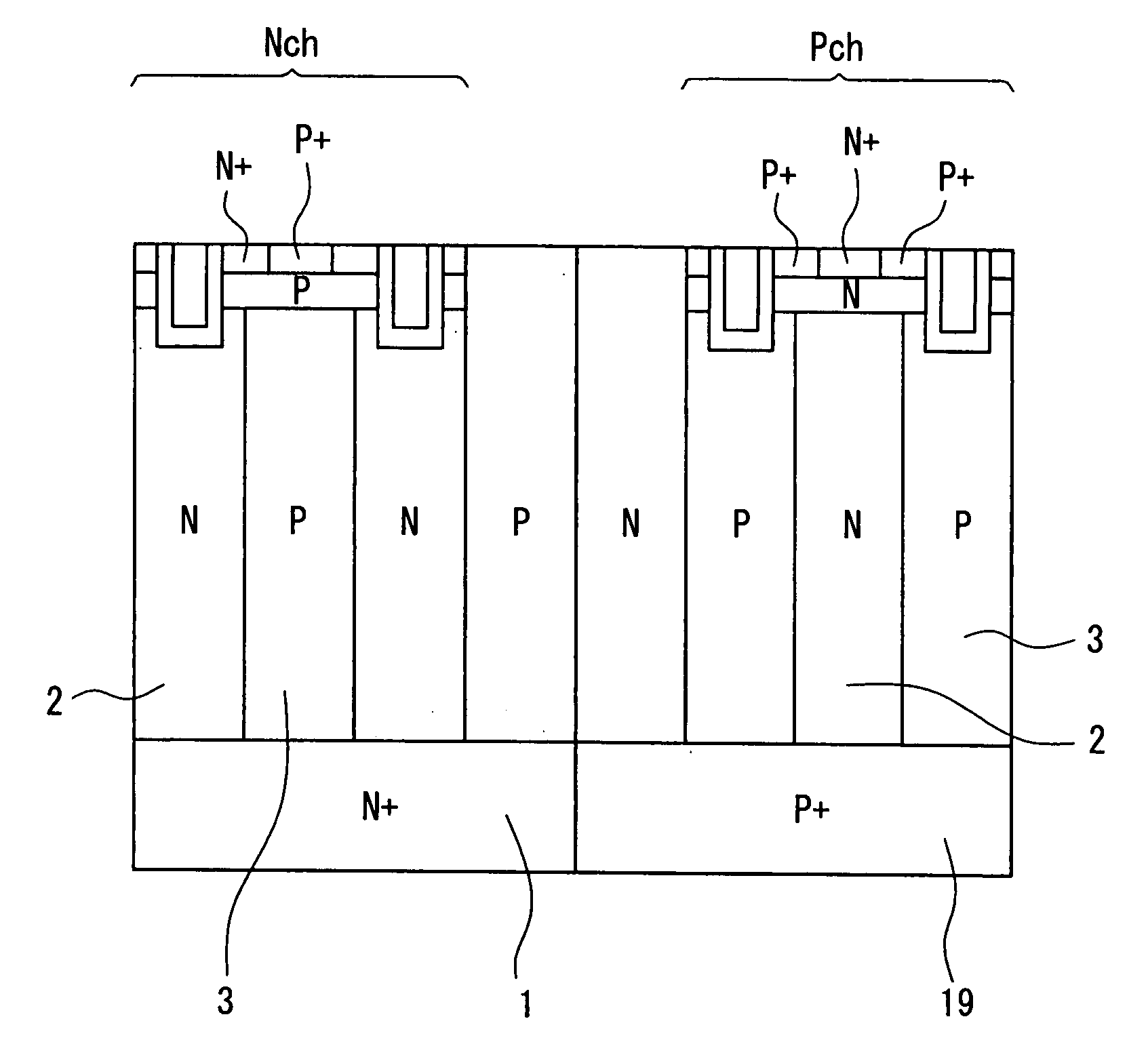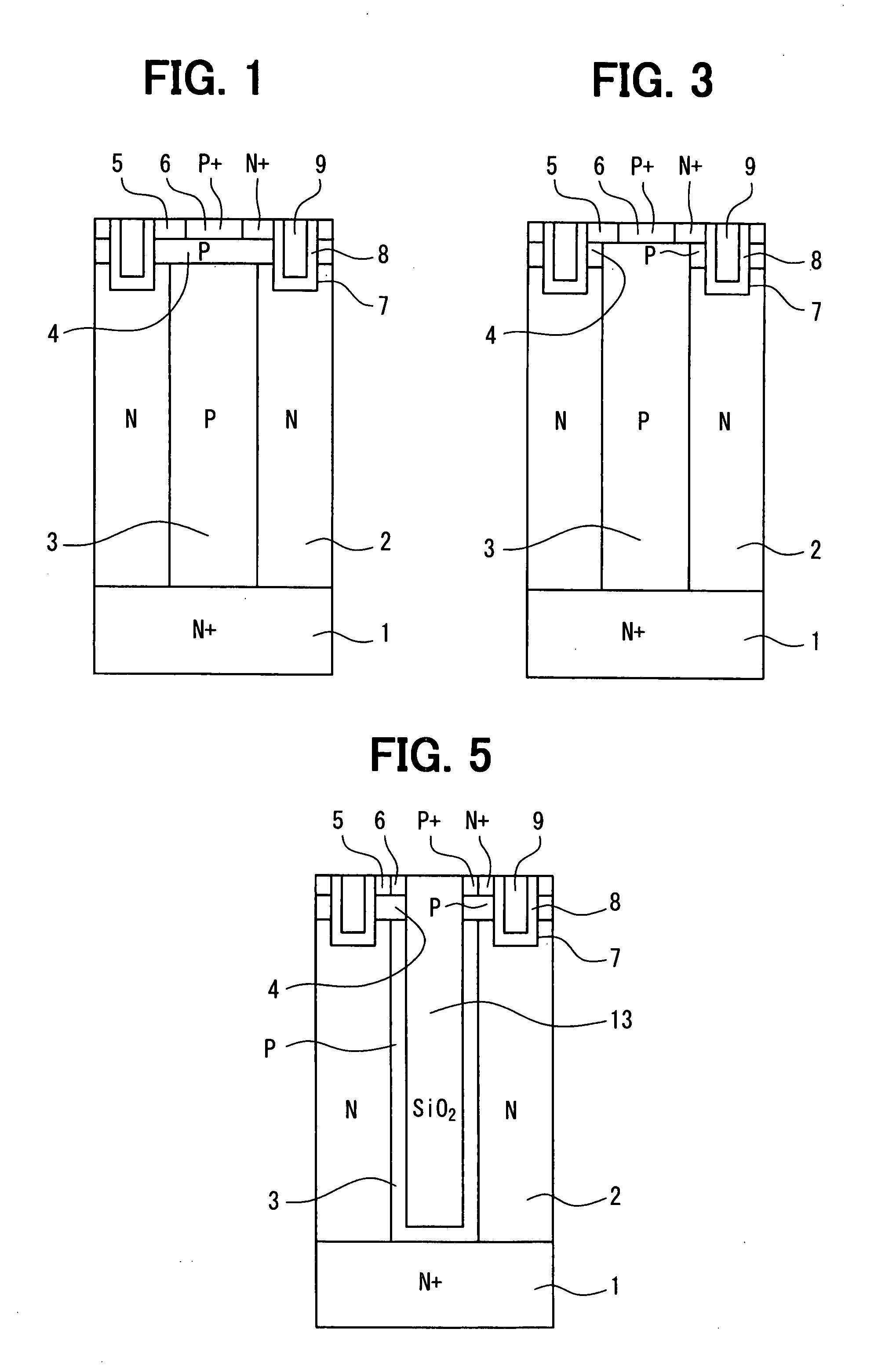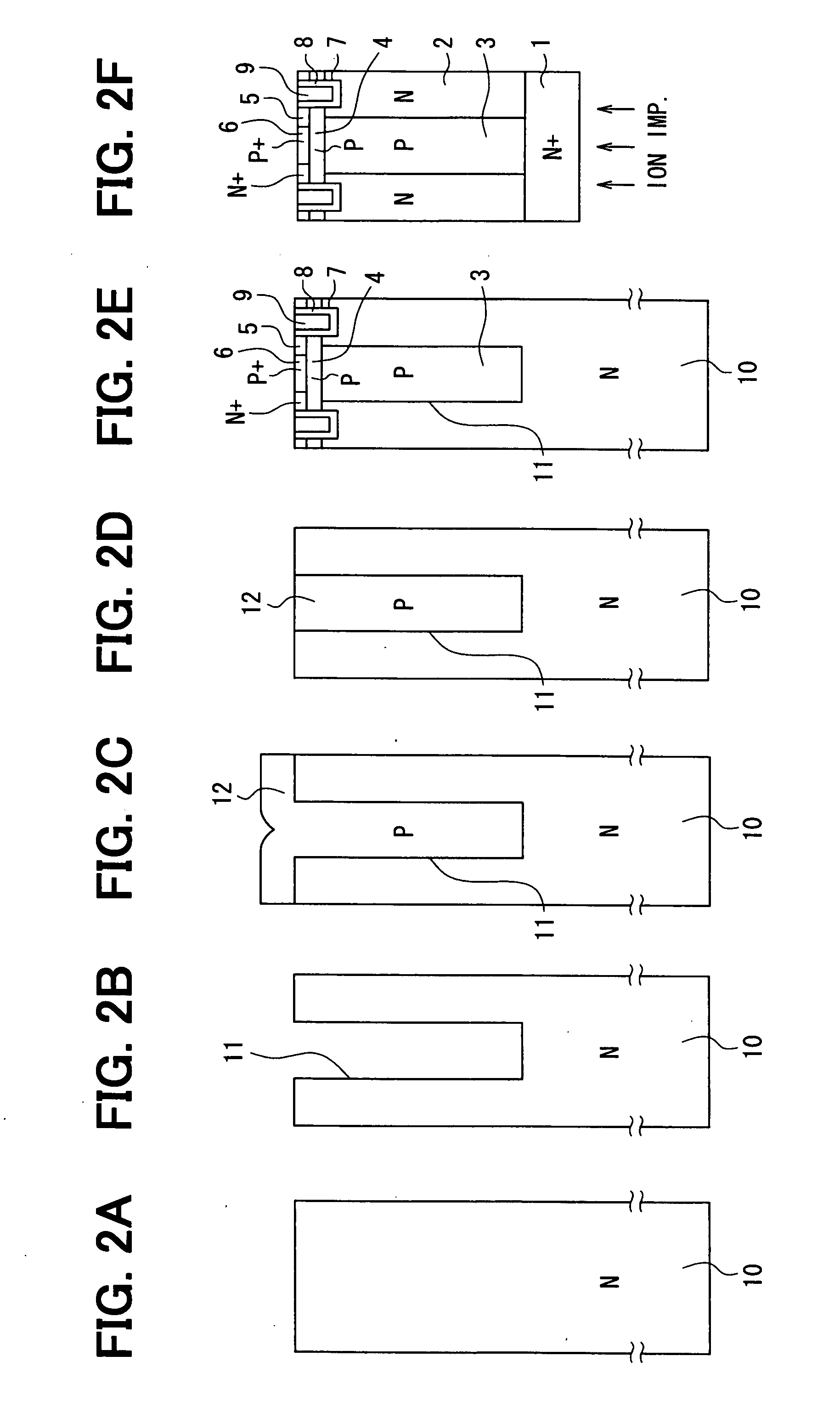Method for manufacturing semiconductor device
a manufacturing method and semiconductor technology, applied in the field of manufacturing semiconductor devices, can solve the problems of film formation for a long time, the epitaxial layer of the n type on the n+ type substrate needs to be thickened, and the manufacturing time and manufacturing cost are reduced, and the width of the first conductive type semiconductor region and the width of the second conductive type semiconductor film is reduced. , the effect of reducing the on-state resistance of the devi
- Summary
- Abstract
- Description
- Claims
- Application Information
AI Technical Summary
Benefits of technology
Problems solved by technology
Method used
Image
Examples
first embodiment
[0039]FIG. 1 is a schematic sectional view of a semiconductor device according to the first embodiment. As shown in FIG. 1, the semiconductor device is formed with a large number of MOS transistors of N-channel type. An N type layer 2 (corresponding to a first layer of first conductivity type) and a P type layer 3 (corresponding to a first layer of second conductivity type) are formed on an N+ type layer 1 (corresponding to a second layer of the first conductivity type) as drift regions, and a super-junction structure in which the N type layer 2 and P type layer 3 are alternately arranged in the planar direction of the N+ type layer 1 is formed.
[0040]Besides, a P type channel layer 4 is formed at the front surface layer parts of the N type layer 2 and the P type layer 3. Further, an N+ type source layer 5 is formed on a side opposing to the N type layer 2, within the front surface layer part of the P type channel layer 4, and a P+ type layer 6 is formed on a side opposing to the P t...
second embodiment
[0058]In this embodiment, only parts different from the parts of the first embodiment will be described. This embodiment features that, after a device portion has been formed on an N type substrate 10, a super-junction structure is formed.
[0059]FIG. 3 is a schematic sectional view of a semiconductor device according to this embodiment. In this embodiment, any P type channel layer 4 is not existent in a P type layer 3, unlike in the semiconductor device shown in FIG. 1 in the first embodiment. More specifically, a P type channel layer 4 is formed at the front surface layer part of an N type layer 2, and an N+ type source layer 5 is formed at the front surface layer part of the P type channel layer 4. In addition, a trench 7 reaching the N type layer 2 is formed penetrating through the N+ type source layer 5 and the P type channel layer 4. A gate insulating film 8 and a gate layer 9 are successively formed on the inner wall surface of the trench 7, whereby a trench gate structure is c...
third embodiment
[0067]In this embodiment, only parts different from the parts of the foregoing embodiments will be described. This embodiment features that a P type layer 3 is not buried completely within a trench 11, but that in a state where a P type epitaxial layer 12 is formed on the wall surface of the trench 11, an insulating layer is buried into the P type epitaxial layer 12 conforming to the shape of the trench 11, thereby to configure a repeated structure which consists of an N type layer 2 and the P type layer 3 formed of the P type epitaxial layer 12.
[0068]FIG. 5 is a schematic sectional view of a semiconductor device according to this embodiment. As shown in the figure, in this embodiment, an oxide film 13 and the P type layer 3 are successively formed on the inner wall surface of the trench 11 which is provided in each N type layer 2 formed with a trench gate structure. An SiO2 film, for example, is adopted as the oxide film 13.
[0069]Next, a method for manufacturing the semiconductor d...
PUM
 Login to View More
Login to View More Abstract
Description
Claims
Application Information
 Login to View More
Login to View More - R&D
- Intellectual Property
- Life Sciences
- Materials
- Tech Scout
- Unparalleled Data Quality
- Higher Quality Content
- 60% Fewer Hallucinations
Browse by: Latest US Patents, China's latest patents, Technical Efficacy Thesaurus, Application Domain, Technology Topic, Popular Technical Reports.
© 2025 PatSnap. All rights reserved.Legal|Privacy policy|Modern Slavery Act Transparency Statement|Sitemap|About US| Contact US: help@patsnap.com



